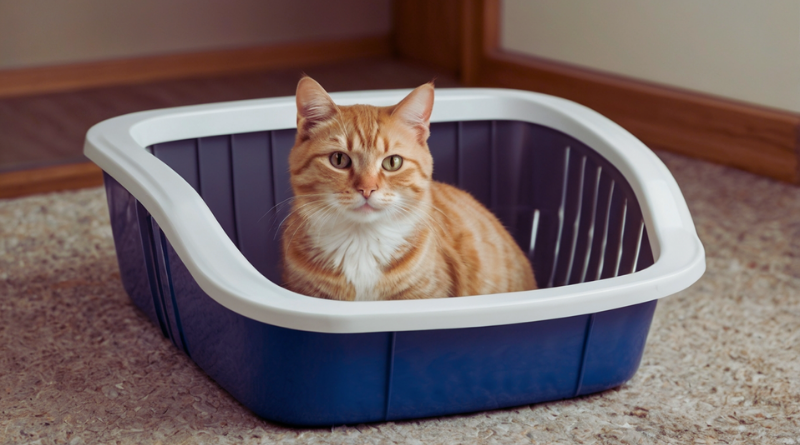Keeping a litter box that is clean and comfortable is one of the most important responsibilities of any cat owner. A well-maintained litter box not only ensures your cat’s health and happiness but also creates a more pleasant living environment at home. Unfortunately, many cat owners encounter various challenges that can lead to frustration and stress for both the pet and the owner. In this post, we discuss common litter box problems and share simple, practical solutions that you can easily apply at home.
Understanding Common Litter Box Problems
Cats are naturally neat animals, so when they start avoiding the litter box or behave unusually, it is a clear sign that something is amiss. Some of the most common issues include:
Odor and Hygiene Concerns
Persistent odors are a frequent complaint among cat owners—even when the litter box is cleaned regularly. The buildup of urine and feces can create an unpleasant smell that discourages your cat from using the box. Regular cleaning and proper ventilation are key to keep odors under control.
Accidents Outside the Box
At times, even with a clean box, a cat may choose to eliminate outside it. These accidents can be disheartening and often indicate environmental stress or discomfort with the current litter setup. It may also be a subtle signal of an underlying health issue.
Spreading Litter Around
Many owners notice that their cat ends up spreading litter beyond the box. This happens when litter sticks to a cat’s paws as it exits. Switching to a litter that minimizes tracking can help significantly—making cleanup easier and keeping your home tidier.
Inadequate Litter Box Size and Location
The size and location of your litter box are essential for your cat’s comfort. A box that is too small or placed in a busy, noisy area can make your cat feel uneasy. Cats prefer a spacious, private setting where they can do their business undisturbed. Ensuring the box is appropriately sized—and placed in a quiet corner—can resolve many issues.
Simple Solutions to Fix the Problems
Addressing these challenges often involves making small, consistent changes. Here are some straightforward tips:
Maintain a Regular Cleaning Routine
The foundation of a successful litter box setup is cleanliness. Scoop out waste from the box every day and wash the container with a mild, unscented detergent at least once a week. This routine not only neutralizes odors but also creates a healthier environment for your cat.
Choose the Right Litter and Ensure Proper Depth
Experiment with different litters until you find one that your cat likes. Many felines enjoy unscented, dust-free, clumping varieties. Also, keeping a litter depth of around 2–3 inches gives your cat enough material to dig and cover its waste naturally, resulting in a cleaner area.
Ensure a Spacious and Calm Environment for the Litter Box
Make sure your litter box is large enough—a box that is at least one and a half times the size of your cat is ideal. In multi-cat households, consider providing an extra box to reduce territorial stress. Additionally, place the box in a quiet, low-traffic area away from loud appliances or strong odors to help your cat feel secure.
Dealing with Accidents Outside the Box
If your cat starts having accidents outside the box, the first step is to consult your veterinarian to rule out any health issues. If everything checks out, slowly retrain your cat using rewards when it uses the box correctly. Sometimes, adding another litter box in a more secluded area can help overcome the problem.
What to Do: Step-by-Step Troubleshooting
- Watch Your Cat’s Behavior Carefully: Notice any changes in your cat’s usual litter habits; these can indicate discomfort or stress.
- Clean and Refresh Regularly: Remove waste promptly and replace old litter with fresh material. Consistency is essential.
- Try Different Litter Options: Experiment with various litter types to discover which one your cat prefers. A change in texture or scent can sometimes make a big difference.
- Adjust the Box Location: If needed, relocate the litter box to a more peaceful, less frequented spot in your home.
- Increase the Number of Boxes: In households with more than one cat, providing an extra box can help reduce competition and avoid accidents.
- Ask a Vet or Pet Specialist for Help: If problems persist, do not hesitate to ask a vet or pet specialist for tailored advice.
Conclusion
A clean, well-placed litter box is vital for your cat’s comfort and your peace of mind. Small improvements—such as regular cleaning, choosing the right litter, and ensuring the box is of adequate size and properly located—can dramatically reduce common problems. Every cat is unique, so a little experimentation might be required to find the ideal setup for your pet. With patience and attention, you can create a harmonious environment that benefits both your cat and your home.
For additional advice and expert insights, check out trusted sources like PetMD and the American Veterinary Medical Association.
Sources:

